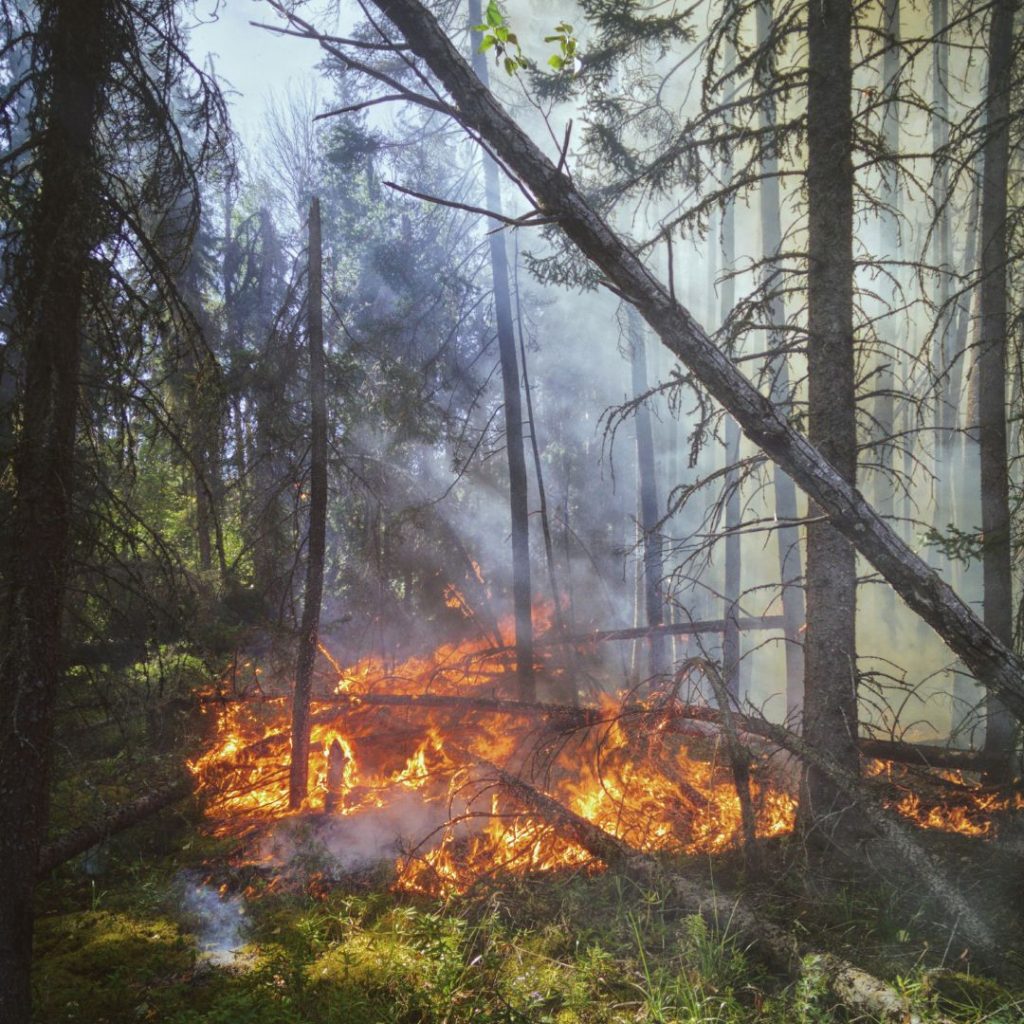Forest fire risk increases with climate change

The consequences of climate change, such as longer periods of drought and heatwaves, as well as the increased recreational use of forests, are increasing the risk of forest fires in Austria. According to a press release from the Austrian Federal Forests (ÖBf), there were over 100 forest fires in Austria in 2023, around 10 of which affected federal forest areas. Around 80 percent of all forest fires in Austria are caused by people, primarily by carelessly discarded cigarettes.
Interaction between climate change and forest fires
"In fact, there are worrying projections for the increase in 'fire weather'. The risk is increasing as the climate crisis progresses. Prolonged droughts in combination with heatwaves are particularly problematic, partly because the vegetation is then depleted of water, weakened and therefore more flammable," forester Peter Wohlleben emphasizes to watson.
In its report , the United Nations Environment Programme (UNEP) describes a reciprocal effect: on the one hand, forest fires are exacerbated by climate change because "drought, high air temperatures, low relative humidity, lightning and strong winds" are increasing due to climate change. This increases the likelihood of forest fires and also their spread. On the other hand, forest fires also fuel climate change themselves, according to the authors of the UNEP report.
The risk of forest fires is high in spring
"The risk of forest and vegetation fires is not only particularly high in midsummer, but also in spring. This is partly due to the dry ground and the lack of budding. A spark is often enough to set the dry leaves or grass on the ground alight," warns Andreas Gruber, CEO of the Austrian Federal Forests, which manage around 15 percent of the country's forests.
In addition to dry soils, strong winds are particularly conducive to the spread of fire. It was only at the beginning of April that three forest fires occurred simultaneously on federal forestry land in Styria, aided by a foehn storm. A total of around 110 hectares of forest were affected. "If protective forests are destroyed by fire, the risk of natural hazards such as mudslides or rockfall also increases. Preparation and preventative measures are therefore crucial in order to minimize the likelihood of forest fires and their possible consequences," emphasizes Gruber.
Together against the flames: Comprehensive package of measures for forest fire prevention
In order to counteract the increasing risk of forest fires, the federal forests are intensifying preventive measures in all ÖBf forestry operations. These include the development of species-rich mixed forests, awareness-raising for forest visitors - including through the "#waldfairliebt" campaign - and increased cooperation with fire departments. "Fighting forest fires requires efficient, holistic management that includes prevention, early detection and actual firefighting. We therefore also intend to carry out forest fire drills and simulation games in all ÖBf forestry operations," reports Gruber.
Species-rich mixed forests as the best fire prevention
While the spread of fire is decisively influenced by wind conditions, the development of fire depends largely on soil moisture. In addition, conifers, such as black pines, have a greater tendency to burn than leafy trees, as they contain essential oils in addition to resin, which act as fire accelerants.
Real, healthy mixed forests and primeval forests hardly ever burn, says forester and author Peter Wohlleben in an interview with watson. "By nature, we would have primeval beech forests and these natural forests would not burn because they are very moist. So it's mainly a problem of plantations in combination with clear-cutting and in the vast majority of cases - with arson," he says of the problem. These plantations are around 8 degrees warmer than primeval beech forests, according to Wohlleben. "We are manipulating the forest too much, that's the point. If you clear these dying spruce plantations, the soil gets even hotter in the summer sun and dries out even more easily. And forest fires can start particularly easily on these clear-cuts."
ÖBf takes a similar view: "The federal forests are therefore countering the risk of fire in the long term with adapted forest management. This is because a diverse, species-rich mixed forest is better able to withstand environmental influences," explains Gruber. Particular attention is paid to mixing endangered forest areas with deciduous wood, which can also extract more moisture from the deeper soil layers in drier times. Care is also taken to build up and maintain a stable humus layer in which precipitation can be stored as effectively as possible.
"A forest fire is a tragedy, no question about it. That's why we should do everything we can to prevent them. But if you draw the right conclusions from it, it can also be an opportunity to finally restore natural forest ecosystems," concludes Peter Wohlleben.






